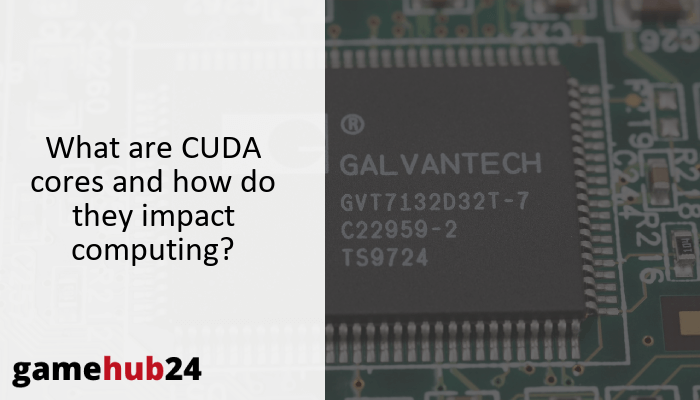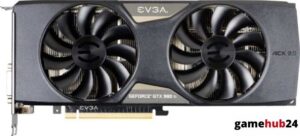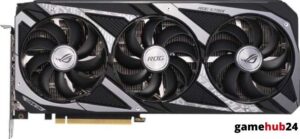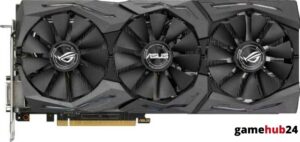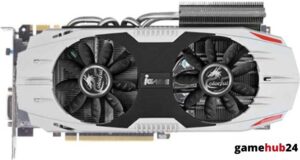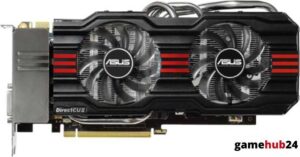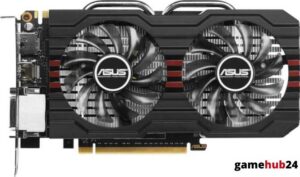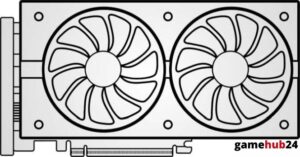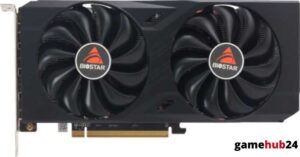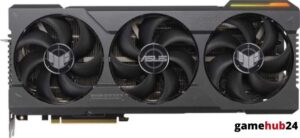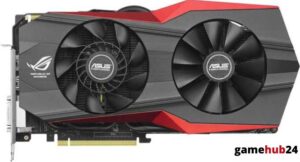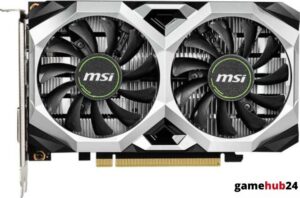The brains of NVIDIA’s GPU architecture, CUDA cores, are essential to a wide range of applications. They are essential for improving gaming experiences, but they also make a big difference in the development of artificial intelligence. Let’s examine their features and the significant influence they have on these apps.
Discover the role that CUDA cores play in NVIDIA’s GPU architecture. These parallel processors improve GPU performance and are essential for scientific computing, gaming, and 3D modeling. They are essential to the CUDA programming approach, which makes it possible to handle complicated computing jobs effectively. Moreover, CUDA cores improve the performance of DirectX, OpenCL, stream processors, and RTX technology. Their significance goes beyond artificial intelligence and machine learning, since they facilitate the acceleration of intricate calculations. All of NVIDIA’s product line, including the GeForce, Quadro, and Tesla GPUs, use CUDA cores.
- CUDA cores are parallel processors that enhance GPU efficiency.
- They play a significant role in gaming, 3D modeling, and scientific computing.
- CUDA cores contribute to the performance of stream processors, DirectX, OpenCL, and RTX technology.
- They are crucial in artificial intelligence and machine learning, expediting complex computations.
- CUDA cores are utilized across NVIDIA’s product range, including GeForce, Quadro, and Tesla GPUs.
What is the role of CUDA cores in a GPU?
The key element that powers the GPU’s computing power is the CUDA cores technology, which is at the basis of NVIDIA’s GPU design. Compute Unified Device Architecture (CUDA) cores are parallel processors that increase the efficiency of the GPU by handling multiple tasks at once. With their thousands of threads running at once, they are the GPU’s workhorses. A GPU can do more jobs concurrently the more CUDA cores it has, which results in quicker and more effective processing. This is especially important for high-demand applications like scientific computing, gaming, and 3D modeling.
How do CUDA cores contribute to the performance of NVIDIA GPUs?
A major factor in NVIDIA GPU speed is the number of CUDA cores. They serve as the foundation of the GPU and are essential to the CUDA programming model since they can execute several instructions at once. Complex computational processes can be handled efficiently thanks to its parallel computing system. The processing power of the GPU is directly correlated with the number of CUDA cores. Because a GPU with more CUDA cores can process more data, it performs better in jobs and applications that need graphics processing.
What is the difference between CUDA cores and shader cores?
Although they are both necessary for GPU operation, CUDA and shader cores have separate functions. NVIDIA GPUs are the only ones with CUDA cores, which are meant to be used for parallel computation. However, visuals and visual effects are rendered by shader cores, which are included in both AMD and NVIDIA GPUs. Their functions are similar, yet their main roles are not the same. While shader cores are more focused on producing realistic graphics and visual effects, CUDA cores are more concerned with general-purpose GPU computing (GPGPU).
Were you aware? It’s not only games that use CUDA cores. They manage the intricate computations needed for neural network and algorithm training, which is a major contribution to artificial intelligence and machine learning. Because of this, NVIDIA’s GPUs with CUDA cores are a well-liked option in the AI and ML space.
How do CUDA cores interact with other GPU components?
The GPU’s CUDA cores don’t function independently. To effectively complete duties, they collaborate closely with other parts like the bus interface and memory. The memory of the GPU houses the data processed by the CUDA cores, and the bus interface allows the GPU and CPU to communicate with each other. The harmonious collaboration of the CUDA cores with other GPU constituents guarantees smooth functioning and peak efficiency, especially in jobs and applications that require a lot of graphics processing power.
How does parallel computing benefit from CUDA cores?
CUDA cores are very helpful for parallel computing, which is a computing architecture that splits jobs into smaller sections to be handled simultaneously. Complex computational tasks can be efficiently completed thanks to the CUDA programming model, which is built to take advantage of parallel computing’s power. The workhorses of this technology are the CUDA cores, which can carry out several commands at once. As a result, processing efficiency and speed are greatly increased, becoming CUDA cores essential in the field of parallel computing.
What is the relationship between CUDA cores and parallel computing?
Parallel computing and CUDA cores have a symbiotic relationship. The ability of CUDA cores to carry out multiple instructions at once is a crucial component of parallel computing. This enables the effective management of intricate computing operations, resulting in enhanced speed and performance. CUDA cores, on the other hand, are useful for parallel computing because they allow for the simultaneous execution of several tasks, which improves processing speed and efficiency. This reciprocal advantage highlights CUDA cores’ significance in the field of parallel computing.
How does GPGPU leverage the power of CUDA cores?
Using the capabilities of CUDA cores, general-purpose computing on graphics processing units (GPGPU) efficiently completes difficult computational tasks. GPGPU is a computing technology that uses the processing capacity of the GPU to perform tasks that are typically performed by the CPU. CUDA cores are essential to this procedure because of their capacity to carry out numerous instructions at once. They enable the effective management of data-intensive operations, which boosts GPGPU application performance and speed.
Advice: Take into account the quantity of CUDA cores when selecting a GPU for applications such as scientific computing or 3D modeling. Better performance in certain data-intensive jobs can be achieved with more CUDA cores. But keep in mind that other elements like memory and clock speed also affect overall performance.
What role do CUDA cores play in stream processors?
CUDA cores are essential components of stream processors, a class of GPU processing unit. CUDA cores are particularly good at handling several data streams at once, which is what stream processors are intended to do. CUDA cores improve stream processor performance and efficiency by carrying out several instructions at once. This results in enhanced performance and quicker processing rates for tasks and applications that require a lot of graphics.
How do CUDA cores enhance video game and computer graphics performance?
CUDA cores greatly improve graphics performance in computer games and video games. The intricate calculations needed to produce realistic images and visual effects are handled by these cores by design. CUDA cores allow for the fast and effective processing of massive volumes of data by carrying out many instructions at once. This results in a more immersive gaming experience, more detailed images, and smoother gameplay. Moreover, DirectX and OpenCL—two essential technologies for computer graphics and game development—perform better thanks to CUDA cores.
How do CUDA cores improve DirectX and OpenCL performance?
The performance of DirectX and OpenCL, two essential technologies for computer graphics and gaming development, is greatly enhanced by CUDA cores. Faster processing speeds and better performance are achieved by these cores since they are made to handle the intricate computations needed by these technologies. CUDA cores allow for the fast and effective processing of massive volumes of data by carrying out many instructions at once. This results in a more immersive gaming experience, more detailed images, and smoother gameplay.
What is the impact of CUDA cores on RTX technology and ray tracing?
RTX and ray tracing are two cutting-edge technologies used in computer graphics and game development that are greatly impacted by CUDA cores. NVIDIA’s RTX technology makes use of CUDA cores to process intricate ray tracing calculations. A method for producing realistic lighting and reflections in 3D settings is called ray tracing. CUDA cores are essential to this procedure because of their capacity to carry out numerous instructions at once. They make it possible to handle ray tracing jobs effectively, which results in more realistic graphics and an engaging gaming environment.
How do video games and computer graphics utilize CUDA cores?
CUDA cores are used in computer graphics and video games to carry out the intricate calculations needed to produce realistic images and visual effects. Multiple instructions can be handled by these cores at once, which improves performance and speeds up processing. This is especially important given the increasing demand for realistic images and fluid gameplay found in modern games and graphics-intensive apps. Through the utilization of CUDA cores, developers may produce more visually appealing and immersive user experiences.
What is the role of CUDA cores in artificial intelligence and machine learning?
Artificial intelligence (AI) and machine learning (ML), two quickly developing fields that largely rely on sophisticated computations, are two areas in which CUDA cores are crucial. These cores’ enhanced performance and higher processing rates are a result of their ability to handle the data-intensive activities linked to artificial intelligence and machine learning. CUDA cores allow for the fast and effective processing of massive volumes of data by carrying out many instructions at once. This is especially important for deep learning processes, as neural networks are trained on massive datasets.
How do CUDA cores contribute to deep learning processes?
Deep learning is a subfield of machine learning that makes use of multilayer neural networks, and CUDA cores play a major role in these processes. The intricate calculations needed to train these networks may be handled by these cores, which will increase processing speed and enhance performance. CUDA cores allow for the fast and effective processing of massive volumes of data by carrying out many instructions at once. This is especially important for deep learning, where networks are trained on massive datasets and speed and efficiency are critical.
What is the significance of CUDA cores in machine learning?
It is impossible to exaggerate the importance of CUDA cores in machine learning. These cores’ enhanced performance and faster processing rates are a result of their ability to handle the data-intensive activities related to machine learning. CUDA cores allow for the fast and effective processing of massive volumes of data by carrying out many instructions at once. This is especially important in machine learning, where algorithms are trained on massive datasets, and speed and efficiency are critical.
How does artificial intelligence benefit from CUDA cores?
CUDA cores are very beneficial to artificial intelligence. These cores’ superior performance and quicker processing rates are a result of their ability to handle the intricate calculations needed for artificial intelligence. CUDA cores allow for the fast and effective processing of massive volumes of data by carrying out many instructions at once. This is especially important in artificial intelligence (AI), where efficiency and speed are critical and sophisticated algorithms are utilized to simulate human intelligence.
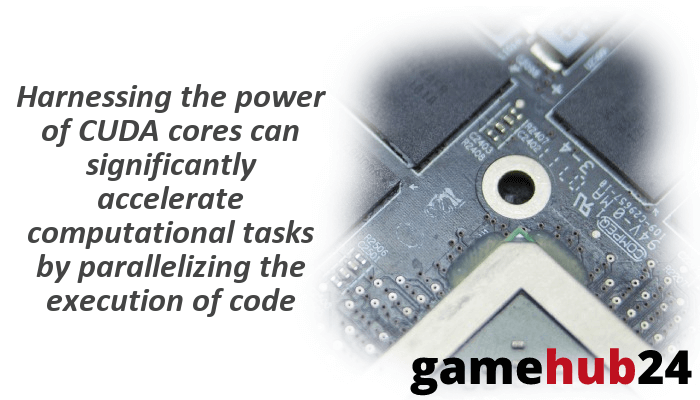
How are CUDA cores utilized in different NVIDIA products?
Many NVIDIA products, such as Quadro and Tesla GPUs in addition to GeForce GPUs, use CUDA cores. The foundation of NVIDIA’s GPU design, these cores carry out numerous instructions at once to improve the performance and efficiency of the GPU. CUDA cores are essential to the functionality of NVIDIA’s GPUs, whether they are used for sophisticated computations in scientific computing or for displaying realistic graphics in games. They are essential in a range of applications due to their capacity to manage several activities at once.
What is the role of CUDA cores in GeForce GPUs?
Crucial to GeForce GPUs are CUDA cores. They are the GPU’s workhorses, carrying out several commands at once to improve performance and efficiency. CUDA cores are essential to the functioning of GeForce GPUs, whether they are used for complicated computations in scientific computing or the realistic visuals rendering in games. They are essential in a range of applications due to their capacity to manage several activities at once.
How do Quadro and Tesla GPUs utilize CUDA cores?
NVIDIA’s flagship products, the Quadro and Tesla GPUs, use CUDA cores to improve performance and efficiency. Multiple instructions can be handled by these cores at once, which improves performance and speeds up processing. This is especially important for applications where high-performance computation is required, such scientific computing and 3D modeling. These difficult jobs can be easily completed by Quadro and Tesla GPUs by utilizing their CUDA cores.
What is the impact of Tensor cores on CUDA cores performance?
A crucial element of NVIDIA’s GPU design, tensor cores also significantly affect CUDA core performance. The purpose of tensor cores is to speed up matrix operations, a kind of computing that is essential in domains like deep learning. CUDA cores are freed up to do other activities by shifting these jobs to Tensor cores, which improves GPU performance overall. The collaboration between CUDA and Tensor cores highlights how advanced NVIDIA’s GPU architecture is.

